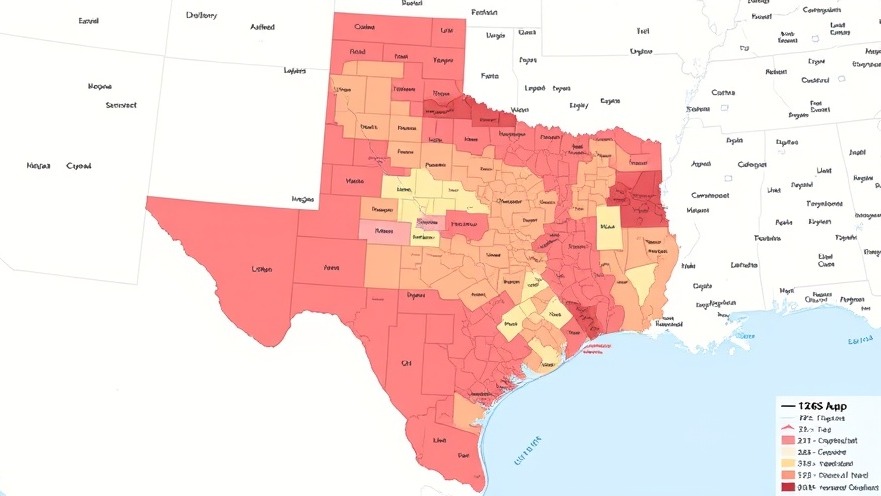
The Big Bet: Texas Republicans' Shift in Demographics
In an ambitious move, Texas Republicans are adjusting their congressional map, aiming to capitalize on a significant 2024 trend: increased support from Latino voters. Recent elections have revealed a marked shift, particularly in South Texas, where traditionally Democratic voters turned toward the Republican Party, predominantly aligning with Donald Trump. This transformation is not just a passing trend; it's a potential harbinger of deeper electoral shifts in the demographics of Texas politics.
Understanding the Landscape: Changing Voter Behavior
Historically, Latino voters have leaned Democratic. However, Donald Trump's influence in the 2024 election saw his support surge in areas like the Rio Grande Valley, where he garnered over 50% of the vote. An analysis indicates that if the new congressional districts had existed during that election, Trump would have won in at least three targeted districts by significant margins—highlighting a potential Republican foothold in blue-leaning territories.
For instance, in the 28th District, currently held by Democrat Henry Cuellar, new boundaries drawn to increase the Hispanic voter share pitted a Republican candidate against incumbent Democrats. The changing demographics are crucial; attempts to reframe this district as more favorable for Republicans signal a strategic gamble, banking that prior support will translate into future election wins.
Not Just Trump: Broader Implications for Republican Candidates
Despite the pronounced shift during Trump's candidacy, questions loom regarding whether this support will sustain without his presence on the ballot in 2026. Democratic strategist Chuck Rocha posits that Trump’s appeal was unique and may not extend to all Republican candidates. His messaging resonated with many voters who felt disillusioned with the status quo, but it's uncertain if other GOP figures can replicate this success.
Making Republican narratives relatable to Latino voters may be a key to their future prospects in these districts. As they craft tailored campaign messages, the GOP must tread carefully, ensuring they genuinely address Latino interests rather than leveraging them simply for political gain.
The Risks of Overconfidence in Latino Voting Patterns
The GOP’s increased reliance on Hispanic voters poses its own challenges. Political analysts express caution, noting that individual races may yield varying results despite favorable statistics. The success of candidate messaging along with local grassroots organizing will determine whether the increased Hispanic turnout is a short-lived phenomenon or represents a substantial political shift.
What Lies Ahead: Predictions for 2026
As the political landscape evolves, the upcoming 2026 election gives both parties an opportunity to redefine their strategies. For Republicans, the aim is to further engage Latino communities, positioning themselves as viable candidates for representation. On the other hand, Democrats must work diligently to reclaim their former strongholds.
Engagement initiatives focusing on issues like immigration reform, economic opportunities, and social justice could help revitalize their relationships with Latino voters. Alternatively, if Republicans can prove their commitment to addressing these concerns head-on, it may solidify their position in areas pivotal for future elections including San Antonio, Houston, and McAllen.
Taking Action: The Importance of Voter Engagement
As Texas heads toward the 2026 elections, both parties must recognize the shifting realities of voter sentiments, particularly within increasingly influential Latino communities. Building strong connections and trust with these voters will be critical in the years to come—a challenge that should energize candidates to approach outreach with sincerity and respect.
Voter engagement plays a vital role in shaping political outcomes. As analysts and residents continue to ponder these changes, it's incumbent on all Texans to stay informed about the candidates and their platforms, recognizing how these choices will shape future state governance.
 Add Element
Add Element  Add Row
Add Row 



Write A Comment